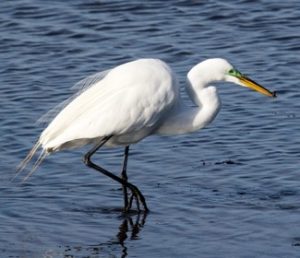Lined Seahorse
Hippocampus erectus

Physical: The lined seahorse, sometimes called the northern seahorse, is one of 54 species of seahorse worldwide. They have a long snout and head that resembles a horse’s head, a prehensile tail, and fin on their back. Coloration varies depending on their surroundings, and can be anywhere from yellow to olive brown to black. They have very distinctive dark lines on the head, neck, and back. Adults grow to 5-6 in (12.7-15.2 cm) on average from head to tail.
Habitat: Their range spans most of the Atlantic coast, from Nova Scotia down through the US, and all the way south to Panama and Venezuela. Lined seahorses are a marine and reef-associated species, found near man-made structures, seagrass beds, or corals. They rely on habitat features for camouflage.
Feeding: The lined seahorse feeds mostly on tiny crustaceans. They rely on camouflage to catch prey, blending in with the surroundings before sucking prey into their snout.
Breeding: Lined seahorse mating pairs are monogamous for life. Females lay their eggs in a male’s brood pouch. The male then fertilizes and incubates the eggs in their pouch for two weeks. Juveniles get released from the pouch after hatching.

Sign up for email or connect through social media.